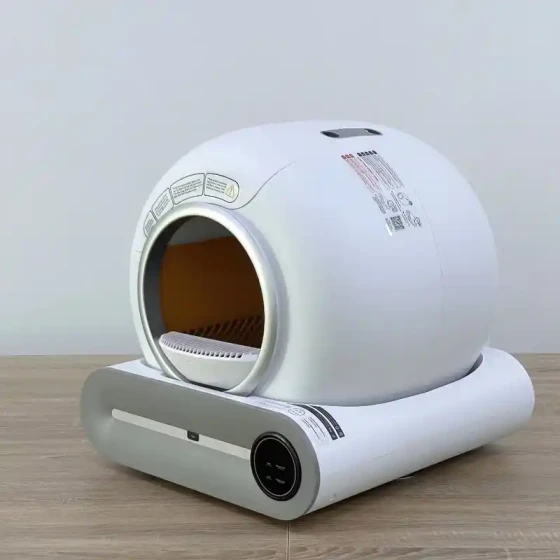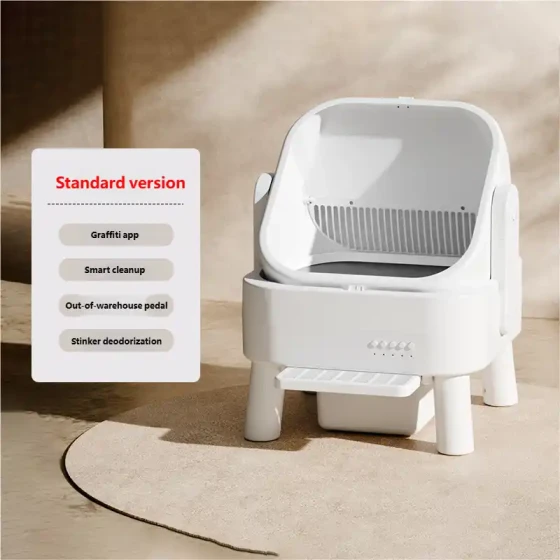Can Cat Hematuria Heal by Itself_Blood in Urine Truth Revealed
Alright, let’s talk about the topic of cat hematuria, a “red alert” that makes countless cat owners’ hearts skip a beat.
To be clear, cat hematuria generally cannot be expected to heal on its own. It’s more like a signal, a distress call from your feline friend telling you there’s something wrong inside their body, and both you and professional veterinarians need to come to the rescue. Hoping for spontaneous healing? That’s like gambling, with your cat’s health, or even life, on the line.

Cat hematuria, medically known as “hematuria,” simply means the presence of blood in the urine. This blood may be visible to the naked eye, showing colors like pink, red, orange, or even brown, or it may be microscopic, only detectable through urine microscopy. Either way, it’s not normal. The production, transport, and excretion of urine is a precise process—from the kidneys filtering blood, to the ureters, then bladder storage, and finally passing through the urethra—any problem in these steps can cause hematuria.
So, what hidden “truths” lie behind this “red alert”? It’s not a single disease but a collective manifestation of various underlying issues. According to veterinary clinical statistics and research, the common causes of hematuria mainly focus on the cat’s lower urinary tract, i.e., the bladder and urethra. This category of problems is known as “Feline Lower Urinary Tract Disease” (FLUTD).
Within the FLUTD “family,” several members are particularly active:
- Feline Idiopathic Cystitis (FIC): It sounds a bit mysterious; “idiopathic” means the cause is unknown. However, recent studies increasingly suggest this condition is closely related to stress. Yes, you heard right, cats can get sick from “worrying” too. Environmental changes, family member changes, intra-multi-cat household conflicts, etc., may all be triggers. FIC causes bladder inflammation, making the bladder wall fragile, allowing tiny blood vessels to rupture and blood to leak into urine. In these cases, hematuria may fluctuate—sometimes mild, sometimes severe, and it may even “disappear” for a while, giving a false impression of recovery. But that’s just symptom relief; the underlying susceptibility isn’t resolved, and once stress recurs, the condition may return. It’s like human stomach ulcers that sometimes ease but can flare up more severely if lifestyle doesn’t change.
- Urinary Stones and Crystals: Similar to kidney or gallstones in humans, minerals crystallize in the urine to form tiny crystals (urinary crystals) or larger stones (urinary stones). These “grains” or “stones” roll inside the bladder or scrape and irritate the urinary tract walls during excretion, causing inflammation and bleeding, leading to hematuria and painful, difficult urination. Urinary stones aren’t like sand—some stones only grow larger and can block the urethra. This is especially dangerous in male cats, whose urethras are narrow, and once blockage occurs, it is a life-threatening emergency! At this time, every second counts.
- Bacterial Infection (Urinary Tract Infection, UTI): While bacterial-induced hematuria is less common in cats under 10 years old, UTI is an important cause of hematuria in senior cats. Bacteria invading the bladder or urethra cause inflammation and infection, naturally accompanied by bleeding.
- Other relatively rare but still concerning causes: including urinary tract trauma (e.g., from falls), tumors (though uncommon but more likely in older cats), congenital structural abnormalities, and systemic diseases such as coagulation disorders (caused by poisons like rodenticides or intrinsic disease), certain viral infections, etc., all may lead to hematuria.
Let’s return to the initial question: Can hematuria heal by itself?
From the above analysis, for non-obstructive episodes of Feline Idiopathic Cystitis (FIC), studies show approximately 85% of cases may experience symptom relief within 5-7 days whether or not special treatment is given. This is why some cat owners might notice their cat’s hematuria seemingly “heals” by itself after a while.
However, please pay attention to this huge “however”!
First, the visible blood in urine does not tell you the underlying cause. Is it FIC? Urinary stones? Bacterial infection? Or something worse? You don’t know!
Second, even with FIC, symptom relief only means temporary disappearance; underlying stress factors or susceptibility remain, with a high recurrence rate. What’s more terrifying is that FIC in male cats has a 15-25% chance of developing into a urethral obstruction, which is a fatal emergency! Once blocked, urine cannot be excreted, toxins accumulate rapidly, threatening life within a short time. Early symptoms can closely resemble non-obstructive FIC (frequent litter box visits, difficulty urinating), making it hard to distinguish.
Taking a step back, even if not obstructed, bladder inflammation and pain make cats very uncomfortable. As responsible owners, watching your pet suffer, how can you just calmly wait for it to “heal on its own”?
Therefore, the most prudent and responsible approach when you discover your cat has hematuria is to take it to the vet immediately.
What will the vet do? Like a detective, they will conduct a series of examinations to uncover the true “culprit” behind the scenes:
- Detailed history inquiry and clinical symptom observation: The cat’s age, sex, habits, diet, mental status, urination frequency, posture, etc., are all important clues.
- Physical examination: Palpating whether the bladder is full, tender, etc.
- Urinalysis and urine culture: This is the gold standard for diagnosing urinary issues. By analyzing urine components, pH, presence of red and white blood cells, bacteria, crystals, etc., initial causes can be judged. Urine culture determines if bacteria are present and which antibiotics work best.
- Imaging examinations: X-rays or ultrasound help detect urinary stones, bladder wall thickening, tumors, and other problems.
- Blood tests: Sometimes necessary to evaluate overall health status, exclude systemic diseases, or assess kidney function.
Once the diagnosis is clear, the vet can propose a targeted treatment plan. Treatments vary depending on the cause:
- If it’s a bacterial infection, antibiotics are needed.
- If it’s urinary stones, special prescription food may dissolve certain stone types, or surgery may be required for removal.
- If it’s FIC, treatment focuses on relieving pain and inflammation and stress reduction. Painkillers and anti-inflammatory drugs may be used, diet adjusted to increase water intake (feeding wet food or adding water to food), providing a richer, less stressful environment (adding scratching posts, toys, hiding spaces, reducing stress sources), and sometimes behavioral medications to relieve anxiety. Recently, new treatments like low-dose radiation therapy are being explored for refractory FIC with promising initial results, offering new hope for suffering cats.
- If it’s urethral obstruction, it is a life-or-death emergency requiring immediate hospital catheterization to relieve the blockage, followed by hospitalization to monitor and prevent recurrence.
See, behind hematuria might hide many possibilities, some even fatal. Simply relying on the “self-healing” mindset could miss the best treatment time, letting minor problems develop into major troubles, or even cause irreversible regrets.
Prevention is always better than cure. Although some causes are hard to avoid completely, we can do much to lower the risk of urinary system problems in cats:
- Increase water intake: Encourage cats to drink water by providing flowing water fountains, mixing wet food with dry food, or adding a small amount of water to food to dilute urine, helping flush the urinary tract and reduce crystal and bacterial buildup.
- Provide stress-reducing environment: Especially for multi-cat households or cats experiencing environmental changes, strive to reduce their stress. Provide enough litter boxes (number of cats + 1), keep litter boxes clean, provide high and hidden places for cats to hide, increase interactive playtime, etc.
- Healthy, balanced diet: Choose high-quality cat food, and use prescription diets when recommended by a vet.
- Regular check-ups: Especially for senior cats, take them for routine exams to detect and manage potential problems early.
So, cat hematuria, please don’t be wishful and hope it magically goes away by itself. It’s not a simple symptom but more like a window through which you may see your cat’s suffering and hidden internal crisis. Seeking professional help immediately is the most responsible love for your furry child. Remember, veterinarians are the professionals who can help you uncover the "truth behind hematuria."





